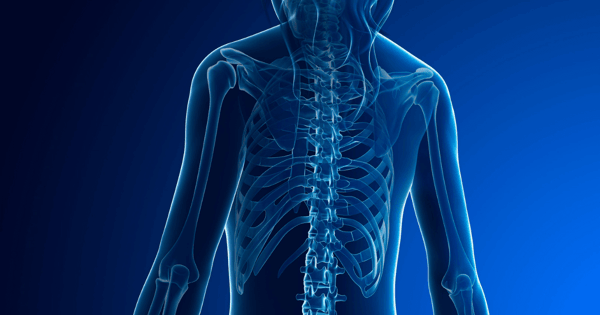Musculoskeletal Disorders
What are Musculoskeletal Disorders?
Musculoskeletal disorders (MSDs) are a set of disorders that cause serious pain, mainly in the musculoskeletal system, including the nerves, tendons, and the muscles. These disorders occur due to the excessive use of muscles over time.
Common examples of musculoskeletal disorders include tendonitis, carpal tunnel syndrome, and tension neck syndrome. These disorders limit the natural movement of the human body and severely limit a person’s ability to work properly.
 Musculoskeletal disorders (MSDs) should be taken very seriously in the workplace. Do you have procedures in place to avoid them?
Musculoskeletal disorders (MSDs) should be taken very seriously in the workplace. Do you have procedures in place to avoid them?
What Causes Musculoskeletal Disorders?
Exposure to various risk factors that result in musculoskeletal disorders eventually results in fatigue. Over a prolonged period of time, the fatigued person is unable to recover, which results in a musculoskeletal imbalance.
This happens when certain muscles in the body end up overworking themselves. Since fatigue continually outpaces the body’s natural recovery, it causes a disorder.
The risk factors that result in musculoskeletal disorders can be usually classified in two categories: work-related factors and individual factors.
Work-Related Risk Factors
The design of a workplace can play an important role in the development of musculoskeletal disorders. For instance, when employees are constantly overworked, they are at an increased risk of developing a disorder. The main work-related risk factors are described below.
Repetitive or Awkward Body Posture
A common cause of musculoskeletal disorders is excessive force due to maintaining an awkward body posture for long periods of time.
For instance, when workers maintain an awkward body posture repeatedly at work for long periods of time, they are liable to sustain injuries.
Exertions
Excessive physical exertion can also cause strain on the human body, resulting in musculoskeletal disorders. This increases the amount of fatigue in the human body, ultimately resulting in MSDs.
Task Repetition
As mentioned above, doing the same task again and again is a major cause of musculoskeletal disorders. Most employees often perform generally repetitive tasks, often because they have to meet specific targets.
Individual Risk Factors
Apart from work related risk factors, employees can get musculoskeletal disorders due to individual risk factors too. It’s important for employers to explain these as well to their employees.
Poor Working Practices
Employees can get musculoskeletal disorders due to poor working practices. For instance, when conducting manual handling tasks such as lifting objects, it’s important that they know how to distribute weight throughout the body instead of lifting with the knees or back.
Unhealthy Habits
General unhealthy habits, such as drinking or smoking excessively, or eating poorly, can all contribute to the onset of musculoskeletal disorders. This increases the risk that workers face for contracting musculoskeletal disorders.
Poor Fitness and Hydration
Hydration is very important for employees who work in large spaces, like warehouses. It’s important to drink water regularly, as it aids in recovery.
However, most employees seemingly forget to drink water as much. This results in dehydration, and prevents muscles from recovering quickly. Ultimately, this can result in musculoskeletal disorders and other health problems too.
Poor Recovery
The human body needs time to recover from the excessive fatigue caused by labour. When workers don’t get adequate rest and recovery, the chances of musculoskeletal disorders increase exponentially.
How to Reduce the Risk of Musculoskeletal Disorders
Employers can take several steps to mitigate the risk of musculoskeletal disorders.
Risk Assessment
The first step is to conduct a thorough risk assessment. This can help employers determine various hazards in the work environment that can be deemed as risk factors which could cause musculoskeletal disorders.
Planning to Mitigate or Eliminate Risks
The next step is to plan for mitigating or eliminating these risks. For instance, if employers know that the chairs in use for employees aren’t suitable and don’t offer adequate lumbar support, they should consider replacing them.
Similarly, for workers who perform manual labour, appropriate safety harnesses should be provided and work schedules should be created to ensure they take proper breaks.
Educating Employees
Many employees aren’t immediately aware of musculoskeletal disorders, since they don’t manifest immediately. It’s important for employers to educate employees about the various risk factors that they are exposed to, and how to mitigate them.
Improving Work Practices
An improvement in work practices can reduce the risk of musculoskeletal disorders significantly. A well-designed job, which includes the provision of proper tools, and reduces repetitive movement, will obviously keep employees healthier.
Equipment Design
The design of tools and equipment used on the job can also have an impact on reducing the risk of musculoskeletal disorders. Ergonomically designed tools that are properly maintained and changed regularly also improve performance.
Use EcoOnline to Better Track Employee Health and Safety
EcoOnline’s Health & Safety Software makes it easy for organizations to create a list of all risk factors that can result in musculoskeletal disorders in the workplace.
It’s a cloud-based solution that can be used for conducting better safety audits and for improving risk management in the workplace.